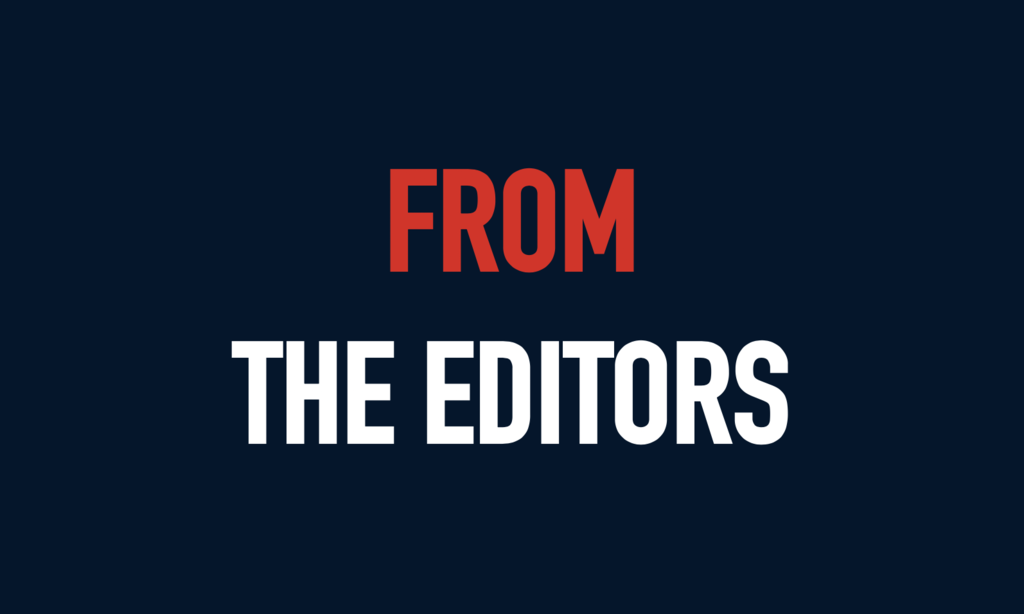The animating principle of Wokeness is self-destructive navel-gazing.
Pink Shift

Is modern social change a reflection of women’s new power?
It remains a mystery what drives the ongoing ferment in Western societies. What explains the disorienting shift, in the last decade or so, toward policies and attitudes that—whether one likes them or not—would have been virtually unthinkable half a century ago? And how can we account for the wildfire contagion of the past year’s Great Awokening, with its strange scenes of penitence and violence?
It is easy to make a list of plausible factors. Television, the Internet, and, more recently, Internet-based social media, have all accelerated social change. These technical changes in media, combined with economic pressures against marriage and family-formation, have also specifically disrupted the cultures of late childhood and early adulthood, leaving many young people psychologically adrift and vulnerable. At the same time, the dislocation caused by multiculturalism has created a demand for ideologies and movements that assert ethnic worth and identity—at least for those whose identity is not problematic. All this has eased the long march of leftist, “woke” ideology from academia into essentially all other social institutions. And of course the onset of the COVID-19 pandemic and US electoral turmoil last year allowed even the most virulent forms of wokeism to be more contagious than ever before.
But perhaps the largest social factor bearing on today’s sweeping shifts is hiding in plain sight.
New Patterns of Civilization
Between 1950 and 2000 in the US, women went from comprising less than a third of the workforce to being almost as well represented as men. In the later decades of that period and up to the present, women escaped their original confinement within subordinate, mostly clerical job categories and became competitors with men in essentially all fields of professional or white-collar work.
Most importantly, women in the past couple of decades achieved parity and even dominance in many culturally influential professions, including journalism, publishing, public relations, law, science, education, medicine, and politics.
In other words, women in the late 20th and early 21st centuries became authors and editors of cultural discourse, in the most powerful country in the world’s dominant civilization, to a degree that has no precedent in any large society in human history. Every major media organization in the U.S. now has female editors in its top ranks; and every major university has women in positions of authority.
If there were no differences in how women and men think, we would not expect this extensive feminization of culturally influential professions to have much cultural impact. But there are such differences.
Virginia Woolf, in her essay Three Guineas (1938), specifically warned of these differences, and the impact they would have once women moved into the working world of men: “Let us [women] never cease from thinking—what is this ‘civilization’ in which we find ourselves?” She believed that Western women were so different from their men that they would, and should, question the very foundations of the societies their men had built.
How Women are Different
Women, unsurprisingly given their traditional maternal roles, are more emotionally sensitive, more empathetic, and more compassionate, on average compared to men. They seem more drawn—again, on average—to subjects that involve people and their relationships, and less drawn to machines and other inanimate and abstract things. They are less into risk-taking and dangerous adventures. Women also seem to form networks with others of their sex more quickly and powerfully than men do—and perhaps for similar underlying reasons seem more susceptible to social contagions.
Women’s heightened emotional sensitivity seems very relevant to the fact that themes of sensitivity, trauma, and victimhood are prominent now in virtually all domains of modern discourse. One could even say that sensitivity—or hypersensitivity—is the emotional core of wokeness and political correctness.
A closely related set of social changes involves a new preference for addressing problems from an overwhelming and urgent sense of compassion, with much less emphasis on cold calculations of likely long-term outcomes. The impulse to “defund the police,” to protect minorities allegedly abused by police, trumps the common-sense calculation that this will encourage more crime, including more crime against the same minorities. Similarly, the impulse to “care for poor refugees” blinds one to the long-term downsides of importing millions of people from ethnically and culturally distant societies.
The liberation of oppressed groups within society, under the banner of “expanding civil rights,” is yet another major area of modern social change that probably reflects women’s new cultural power. Part of the public support for the ever-expanding civil rights narrative has to do with compassion for the perceived victims of injustice and oppression, but another part comes from guilt over supposedly being an oppressor. It seems at least plausible that women’s greater emotional and interpersonal sensitivity means that, in this domain at least, they not only feel compassion and protectiveness toward others more strongly, but also feel guilt more strongly, compared to men.
And then there is the alarming set of cultural trends in recent years that involves declines in support for free speech, due process, open debate, free scientific inquiry, and other pillars of modern Western liberalism. Surveys suggest that women, compared to men, are markedly less supportive of these liberal ideas, so it’s hardly a stretch to attribute their erosion to cultural feminization. There is no consensus as to why women are this way, but again, this may reflect psychological adaptations for child-rearing—which, if my own experience is any guide, tends to be rather undemocratic and peremptory. That women are more averse to debate and confrontation may also stem from their greater emotional sensitivity—a sensitivity that makes verbal swordplay more stressful for them, on average, than it is for men, and may help explain why they often use phrases like “made me feel unsafe” to justify their suppression of debate or dissent.
It’s probably also worth mentioning that the female traits that seem most important in this ongoing cultural “pink shift” appear to manifest most strongly in single women. Single women in recent decades have become much more numerous as a percentage of the population, as women have worked more, married less, and in general have grown more independent of men. Single women may also be overrepresented in culturally influential professions.
An Unwelcome Idea
Even if we put aside the issue of women’s psychological differentness, it should be obvious from women’s prominent involvement in virtually every public manifestation of wokeness that this ongoing social transformation owes something to their newfound power.
But women’s cultural ascendancy is an idea that media and academia seem to resist. Perhaps the Left won’t embrace it because it conflicts with feminist dogma that women remain oppressed. The Right, especially the Establishment Right, may also prefer not to talk about it for fear of alienating a group whose support they desperately need.
The cultural silence concerning women’s new cultural power may thus be one of the most important effects of that power.
The American Mind presents a range of perspectives. Views are writers’ own and do not necessarily represent those of The Claremont Institute.
The American Mind is a publication of the Claremont Institute, a non-profit 501(c)(3) organization, dedicated to restoring the principles of the American Founding to their rightful, preeminent authority in our national life. Interested in supporting our work? Gifts to the Claremont Institute are tax-deductible.
On Trump and the virus.
Media culture sells girls’ bodies—and souls—for parts.
Any authentic women’s movement must acknowledge the realities of womanhood.




